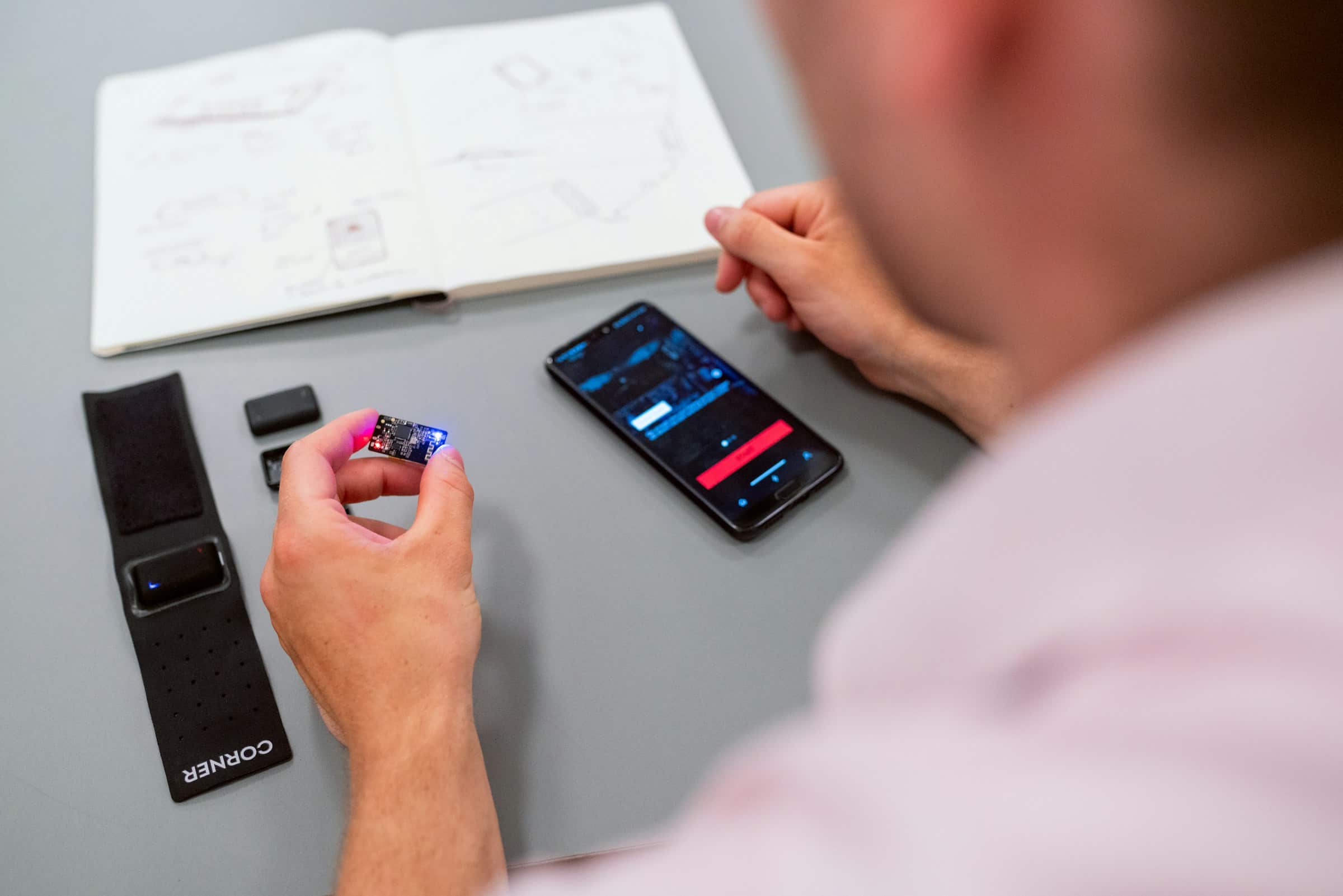
How Can You Use Your Smartphone to Control and Monitor Your Home's Energy Consumption?
In an age where technology continues to advance at a rapid pace, energy efficiency has become more accessible to the average household. Today, smartphones aren't just for communication; they are powerful tools that can help you control and monitor your home's energy consumption. This article will delve into the various ways you can leverage your smartphone to achieve a more energy-efficient home. We will discuss the systems, devices, and applications that can make this possible, providing you with practical insights to save money and reduce your environmental footprint.
Transforming Your Home with Smart Energy Systems
The advent of smart home technology has revolutionized how we manage our energy usage. At the heart of this innovation are smart energy systems, which integrate various devices to provide you with seamless control over your home's energy consumption. By utilizing these systems, you can monitor and adjust your electrical usage in real-time, optimizing the way you consume power.
Lire également : How to Use Your Smartphone as a Digital Measuring Tool for Home Projects?
Smart energy systems often include components like smart thermostats, which allow you to control your heating and cooling remotely. These devices are designed to learn your habits over time, automatically adjusting temperatures to maintain comfort while saving energy. For example, if you typically leave for work at 8 AM, your smart thermostat can lower the temperature after you leave and start heating or cooling your home before you return.
Additionally, smart electrical panels offer another layer of control. These panels provide detailed insights into your home's energy consumption, allowing you to identify which appliances are using the most power. By integrating these panels with your smartphone, you can get notifications about unusual energy usage and make informed decisions on how to reduce it.
Cela peut vous intéresser : How Can You Use NFC for Quick and Secure Smartphone Payments?
The combination of smart thermostats, electrical panels, and other smart devices forms a comprehensive energy monitoring and control system that can significantly enhance your home's energy efficiency. By using your smartphone to interact with these systems, you can ensure that your home is running optimally at all times.
Monitoring Your Energy Consumption in Real Time
One of the most significant advantages of smart technology is the ability to monitor energy consumption in real time. With the help of various apps and devices, you can gain a detailed understanding of how your home uses energy at any given moment. This real-time monitoring capability is essential for making immediate adjustments and achieving long-term energy savings.
Using an energy monitoring app, you can track the performance of each appliance in your home. These apps provide insights into how much power each device is consuming, allowing you to pinpoint areas where you can cut back. For instance, if you notice that your air conditioning unit is using more electricity than usual, you can investigate potential issues or consider upgrading to a more energy-efficient model.
Moreover, many energy monitoring apps also offer historical data analysis. This feature enables you to compare your current energy consumption with previous periods, helping you identify trends and make more informed decisions. By understanding these patterns, you can implement changes that lead to energy savings over time.
Real-time monitoring also allows for the automation of energy-saving actions. For example, if your energy consumption spikes during peak hours, your smart system can automatically adjust settings to reduce usage. This not only helps you save energy but also lowers your utility bills by avoiding higher rates during peak times.
Overall, real-time energy monitoring is a powerful tool that puts you in control of your home's energy consumption. By using your smartphone to access these insights, you can make smarter decisions that contribute to a more sustainable lifestyle.
Leveraging Smart Thermostats for Efficient Heating and Cooling
Smart thermostats are among the most effective tools for enhancing your home's energy efficiency. These devices go beyond traditional thermostats by providing advanced features that allow you to control and optimize your heating and cooling systems from your smartphone. By leveraging smart thermostats, you can achieve significant energy savings while maintaining comfort in your home.
One of the key benefits of smart thermostats is their ability to learn your schedule and preferences. Through machine learning algorithms, these devices can anticipate when you will be home and adjust temperatures accordingly. For instance, if you typically arrive home from work at 6 PM, your smart thermostat can start warming up or cooling down your home before you get there. This ensures that you are comfortable upon arrival without wasting energy throughout the day.
Smart thermostats also offer remote control capabilities, allowing you to adjust settings from anywhere using your smartphone. This means that if you forget to turn off your heating system before leaving for vacation, you can do so remotely. Additionally, many smart thermostats come with geofencing features that use your smartphone's location to automatically adjust temperatures when you are nearby.
Energy monitoring is another crucial feature of smart thermostats. These devices provide detailed reports on your energy consumption, showing you how much you are spending on heating and cooling. By understanding these patterns, you can make adjustments to reduce your energy usage and save money on utility bills.
Furthermore, some smart thermostats are compatible with renewable energy sources, such as solar panels. By integrating your smart thermostat with your solar system, you can maximize the use of renewable energy for heating and cooling, further enhancing your home's energy efficiency.
In summary, smart thermostats are a valuable addition to any smart home. By using your smartphone to control and monitor these devices, you can optimize your heating and cooling systems, reduce energy consumption, and save money.
Integrating Home Automation for Comprehensive Energy Management
Home automation is the key to achieving comprehensive energy management in your home. By integrating various smart devices and systems, you can create a cohesive network that works together to optimize your energy usage. Your smartphone serves as the central hub for controlling and monitoring these devices, providing you with unparalleled convenience and control.
One of the primary components of home automation is the use of smart devices that communicate with each other. These devices include smart thermostats, smart lighting systems, smart plugs, and more. By connecting these devices to a central home energy management system, you can automate various actions that lead to energy savings. For example, you can set up routines that turn off lights and appliances when you leave the house, ensuring that no energy is wasted.
Another critical aspect of home automation is the use of energy-efficient appliances. These appliances are designed to consume less power while delivering the same level of performance. By replacing outdated devices with energy-efficient models, you can significantly reduce your home's overall energy consumption. Your smartphone can help you monitor the performance of these appliances, ensuring that they are operating at peak efficiency.
Moreover, home automation allows for the integration of renewable energy sources, such as solar panels. By incorporating solar panels into your home energy system, you can generate your own electricity and reduce reliance on the grid. Your smartphone can provide real-time data on the energy produced by your solar panels, allowing you to make informed decisions on how to use this energy effectively.
Voice control is another feature that enhances home automation. By using voice commands through virtual assistants like Amazon Alexa or Google Assistant, you can control various aspects of your home energy system without lifting a finger. This adds an extra layer of convenience and ensures that you can manage your energy consumption effortlessly.
In conclusion, home automation offers a holistic approach to energy management. By using your smartphone to control and monitor smart devices, energy-efficient appliances, and renewable energy sources, you can achieve a high level of energy efficiency and enjoy a more sustainable lifestyle.
Embracing Solar Power for Sustainable Energy Consumption
The transition to renewable energy sources is a crucial step towards achieving sustainable energy consumption. Among the various renewable options available, solar power stands out as a highly viable and efficient solution for residential use. By embracing solar power, you can significantly reduce your reliance on non-renewable energy sources and lower your carbon footprint. Your smartphone can play a vital role in managing and optimizing the use of solar energy in your home.
The first step in integrating solar power into your home energy system is the installation of solar panels. These panels capture sunlight and convert it into electricity, which can be used to power your home. The energy generated by solar panels can either be used immediately, stored in batteries for later use, or fed back into the grid, depending on your setup and energy needs.
Your smartphone can help you monitor the performance of your solar panels in real-time. Various apps are available that provide detailed insights into the amount of energy being produced, the efficiency of your panels, and the overall contribution of solar power to your energy consumption. By analyzing this data, you can make informed decisions on how to optimize the use of solar energy in your home.
In addition to monitoring, your smartphone can also help you control the distribution of solar energy. For instance, if your panels are generating more electricity than you need at a given moment, you can choose to store the excess energy in batteries for use during periods of low sunlight. Alternatively, you can sell the surplus energy back to the grid, potentially earning credits from your utility provider.
Integrating solar power with other smart home devices enhances the efficiency of your overall energy system. For example, by connecting your smart thermostat to your solar system, you can ensure that your heating and cooling needs are met using renewable energy. Similarly, smart plugs and lighting systems can be programmed to prioritize the use of solar-generated electricity, further reducing your dependence on the grid.
In summary, embracing solar power is a forward-thinking approach to achieving sustainable energy consumption. By using your smartphone to monitor and control your solar system, you can maximize the benefits of renewable energy and contribute to a greener future.
In conclusion, leveraging your smartphone to control and monitor your home's energy consumption is a practical and effective way to achieve energy efficiency. From smart energy systems and real-time monitoring to smart thermostats and home automation, various tools and technologies are available to help you optimize your energy usage. Embracing renewable energy sources like solar power further enhances your ability to save energy and reduce your environmental impact. By taking advantage of these innovations, you can enjoy a more sustainable and cost-effective lifestyle while contributing to a cleaner planet.
